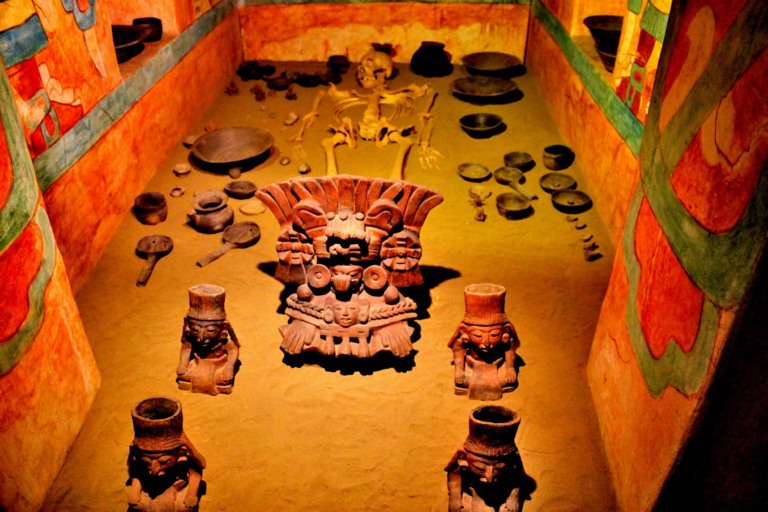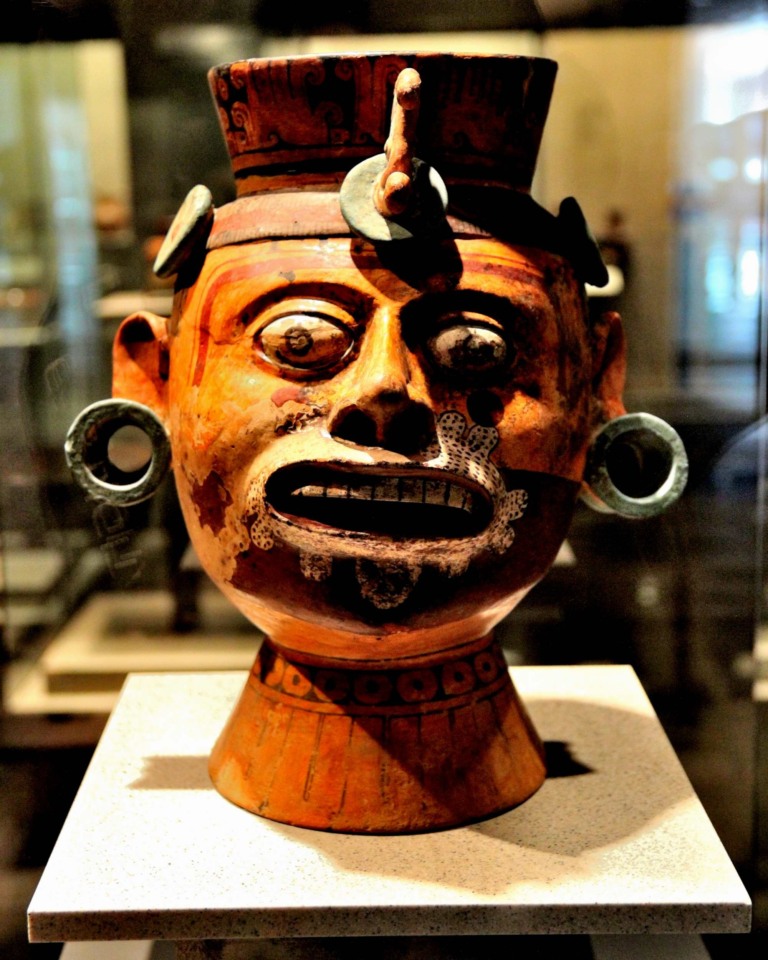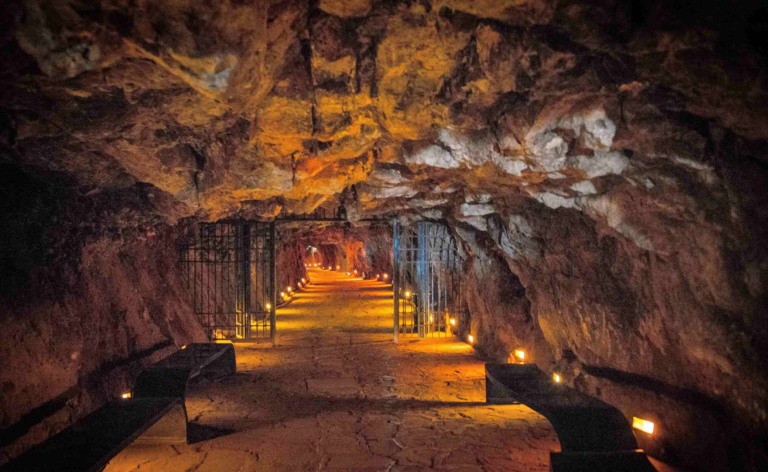El Tajin is a pre-Columbian archaeological site in the south of Mexico. It was one of Mesoamerica’s biggest and most important cities during the Classic period. El Tajin was an important part of the Classic Veracruz culture. It was at its best from 600 to 1200 CE, when many temples, palaces, ballcourts, and pyramids were built there. From the time the city fell in 1230 until 1785, when a government inspector found the Pyramid of the Niches, no European seems to have known it existed.
El Tajín Veracruz
El Tajin was named after the Totonac rain god. Because of its cultural and architectural significance, El Tajin, Pre-Hispanic City, was designated a UNESCO World Heritage Site in 1992. In the Toltec language, El Tajin means “thunder.” However, other records say that the name of the site comes from “place of the dead” or “place of the invisible spirits.”
This architecture uses cement and decorative niches in ways that aren’t seen anywhere else in Mesoamerica. Its most famous building is the Pyramid of the Niches, but the Arroyo Group, the North and South Ballcourts, and the palaces of Tajin Chico are also important. All together, 20 ballcourts have been found at this site. Three more were found in March 2013.
Since the 1970s, El Tajin has been the most popular archeological site for tourists in Veracruz. In 2017, there were 386,406 people who went there. It is also where the annual Cumbre Tajin Festival takes place every March. The festival has cultural events from both inside and outside the country, as well as concerts by well-known musicians.
El Tajin Historia
Chronology studies at Tajin and nearby sites show that people have lived in the area since at least 5600 BCE. They also show how nomadic hunters and gatherers turned into farmers and built more complex societies before the city of El Tajin was built.
Around 1150 BCE, when the nearby Olmec civilization grew, the pace of this social change sped up, even though there were never a lot of Olmec people here. Who built the city is not clear. Some people say the Totonacs and Xapanecas lived there, but there is a lot of evidence that the Huastec lived there when the settlement was built in the 1st century CE.
Soon after, people started building big things, and by 600 CE, El Tajin was a city. Tajin grew quickly because it was in a good spot along the old Mesoamerican trade routes. It controlled the flow of goods, including the export of vanilla and the import of goods from other parts of what is now Mexico and Central America. There are a lot of things from Teotihuacan that date back to the early centuries.
Voladores de Papantla
At the south end of the site is where you can get in. A cafeteria, information services, a park, and administrative offices have been added to this area. Here is also where the site museum is. The Danza de los Voladores is also performed at the entrance to the site, and visitors are expected to watch it. Every half hour, the voladores show up at the pole and form a circle set up right outside the main gate.
The park is called Parque Takilhsukut and is about a kilometer away from the main site. It is a modern building that is meant to be a center of indigenous identity in Veracruz. It’s 17 hectares large and can hold up to 40,000 people. It is the site of fairs, conventions, and other events. Each March, it is part of the Cumbre Tajin cultural festival. There are also places for workshops, shows, seminars, ceremonies, and alternative therapies.
El Tajin Ruins
The Arroyo Group gets its name from the fact that it is surrounded by two streams on three sides. This area is more than 86,100 square feet and is one of the oldest parts of the city (8,000 m2). It is surrounded by four tall buildings with temples on top. These buildings are called Buildings 16, 18, 19, and 20.
From the plaza floor, stairs lead up to the temples. In contrast to the rest of the city, these four buildings are all about the same size and shape. The pyramids here aren’t as well made as the rest of the site. For example, the niches aren’t as well made. At the top of each of the arroyo group’s east and west pyramids, there were three temples.
Another strange thing about this plaza is that it doesn’t have any smaller buildings or altars to break up the space. It was decided that this was the city market because it had a lot of space for stalls and a god who was connected to business. The merchant god here is more like a god from the central highlands of Mexico than it is like a god from Tajin.
Pyramid of Niches
This pyramid is also called El Tajin, the Pyramid of Papantla, the Pyramid of the Seven Stories, and the Temple of the Niches, among other names. It has become the most interesting part of the site because of its unusual shape and good condition. It was important in the past as well. From this pyramid, a lot of sculptures were taken out.
Most of the building is made of flagstones that have been carefully cut and shaped. The largest one is thought to weigh about eight metric tons. The stones fit together so well, especially around the niches, that they only need a small amount of lime and earth to hold them together. The building was first covered with stucco, which was used as a base for paint.
The pyramid is made up of seven floors. Each of these has a talud, which is a sloped base wall, and a tablero, which is a vertical wall. Both of these were common in Mesoamerica. What is different about this building and others in the city is that it has decorative niches and a triangular overhang that Jose Garcia Payon called a “flying cornice.”
The stones are set up in a way that is both precise and delicate. At first, the building was painted dark red, and the niches were painted black to make the shadows in the recesses deeper. Along the east face, there are also niches under the stairs, which shows that the stairs were added later. If you don’t count the niches on the later staircase, there are 365 niches on the original building. At the top of the pyramid, strange serpent-dragons held up tablets.
Tajin Chico
Tajin Chico is a part of the site with many levels that goes up a hill north-northwest from the older parts of the city. A lot of this section was made by putting a lot of trash in landfills. It is a huge acropolis with a lot of palaces and other public buildings. Here, there aren’t that many temples. Also, it is easier to protect than other parts of the city. Tajin Chico got its name from the fact that it was first thought to be a separate but related site. It is now known that it was part of the city’s center. But since the term was already used in writing about the site, it stuck.
North Ballcourt
Three layers of large flagstones make up the North Ballcourt. Six carved panels show scenes from rituals, and a decorative frieze runs along both walls. The court is only 87 feet (27 meters) long, which is unusually short, and it has straight walls instead of walls that slope. It is probably one of Tajin’s oldest buildings.
Parts of the panels and friezes are so worn down that they are missing in large areas. In the four end panels, there are scenes about the ball game’s ritual that lead to prayers to the gods. The gods are shown responding to or doing their own rituals in the middle panels. Each end panel has a different version of the god of pulque, which suggests that the drink was an important part of the ritual.
South Ballcourt
Like the North Ballcourt, the South Ballcourt only has sculpted vertical walls. Most of the carvings on these walls are still in good shape. They show step-by-step how the ball game was played here, including ceremonies, sacrifices, and the gods’ reactions. The court runs roughly from east to west and is 198 feet long and 34.5 feet wide.
From Building 5 to the north and Building 6 to the south, as well as from stands built on one side of the court, people could watch the events. The court is made of stones that weigh up to ten tons each and came from many different places. Once the walls of the court were built, six panels were carved into the corners and middles of each wall. The panels on the sides show scenes from the game, and the panels in the middle show what the gods say.








